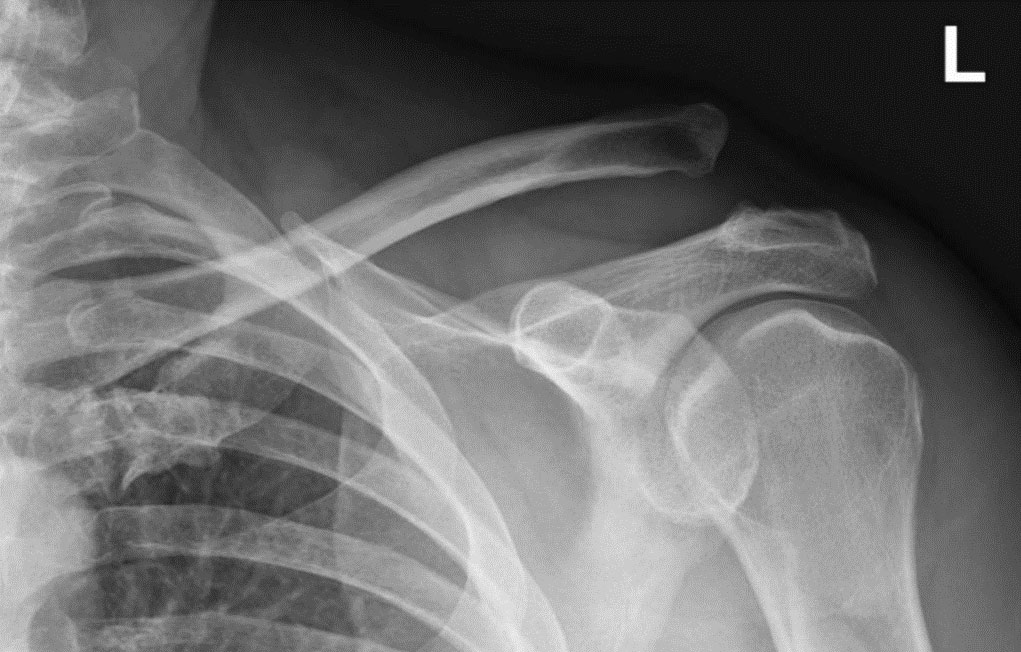Acromio-Clavicular(AC) Joint Dislocations

AC joint dislocations occur most commonly when one falls directly on the point of the shoulder.
- Dr Duckworth
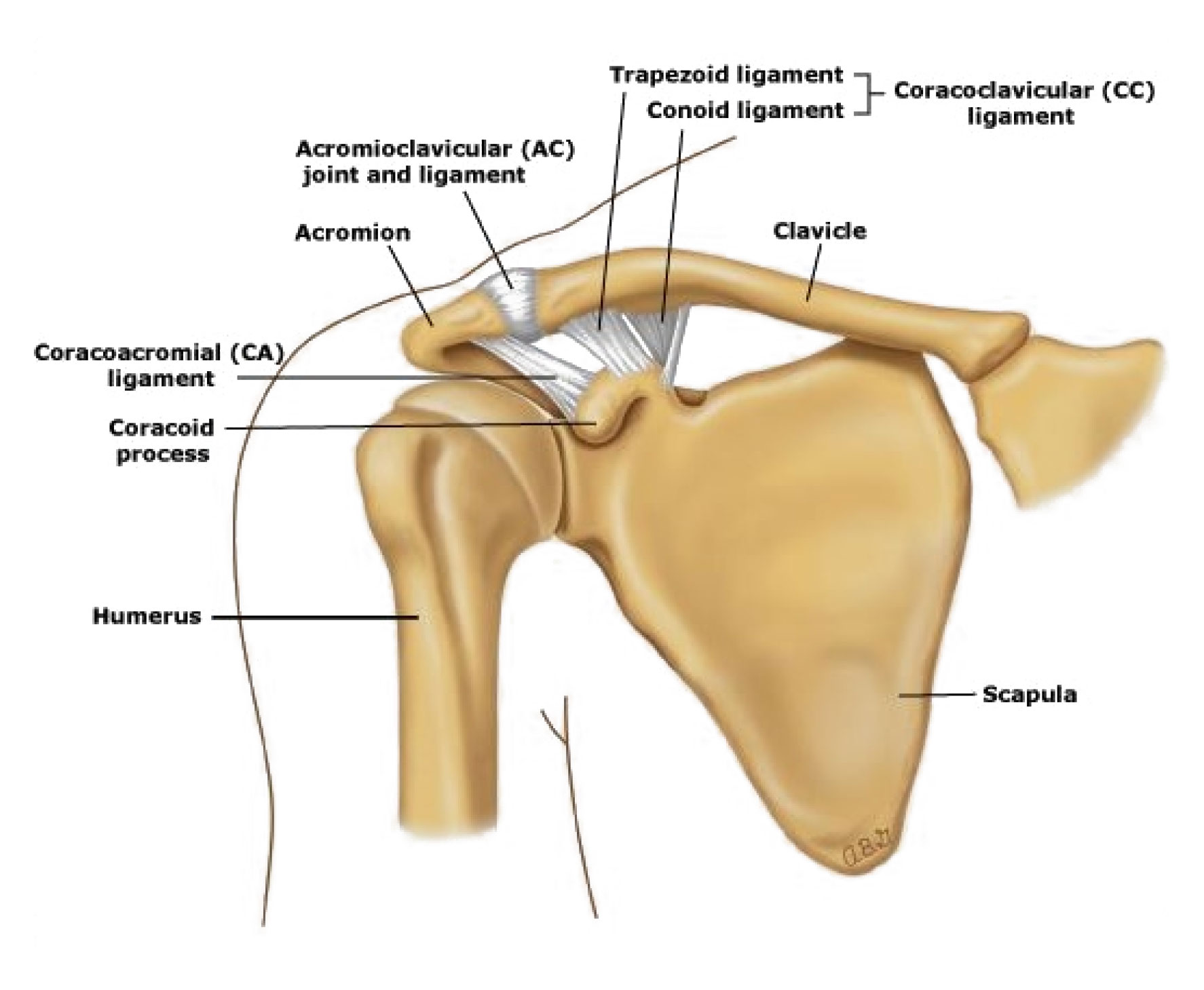
The acromioclavicular or AC joint is a joint in the shoulder where the clavicle (or collarbone) meets the top of the scapula (or shoulder blade).
The portion of the shoulder blade which meets the clavicle is called the “acromion”. Therefore, where the acromion meets the clavicle is the AC joint. Usually there is a protuberance or bump in this area, which can be quite large in some people.
This joint, like most joints in the body, has a cartilage disc or meniscus inside and the ends of the bones are covered with cartilage. The joint is held together by a capsule, and the clavicle is held in the proper position by two heavy ligaments called coracoclavicular ligaments.
Learn more about AC joint reconstructions
AC Joint Injuries
AC joint dislocations occur most commonly when one falls directly on the point of the shoulder. Such a fall would separate the clavicle away from the acromion, stretching or tearing the ligaments.
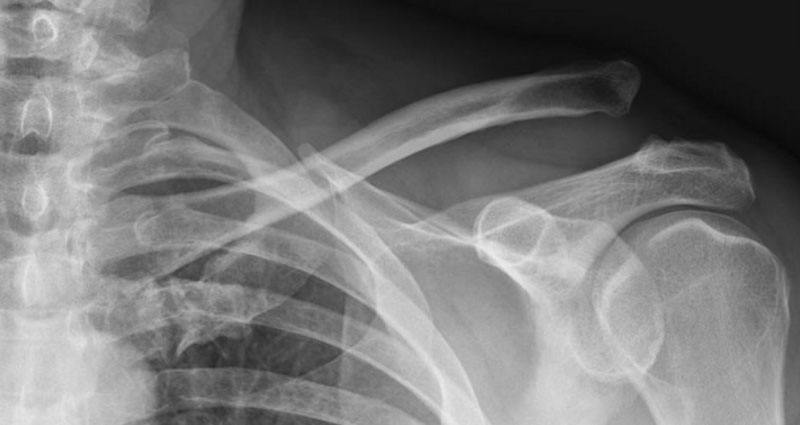
Injuries to the AC joint are graded according to the degree of damage which occurs at the time of the injury. Grade I indicates stretching of the ligaments which support the AC joint, but with a more severe injury, the ligaments may partially tear (Grade II), or completely tear (Grade III).
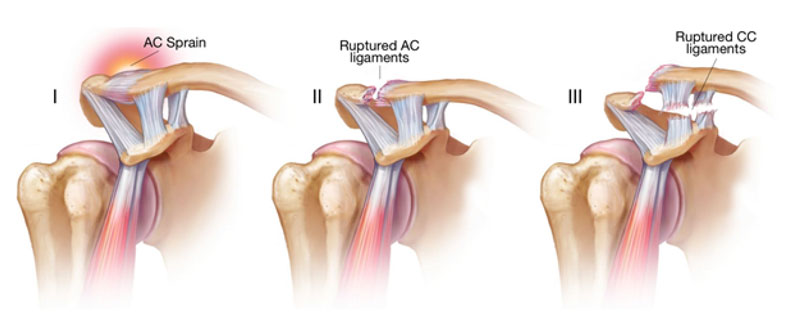
These can be very painful injuries. In the most severe injury, the end of the clavicle protrudes beneath the skin and is visible as a prominent bump.
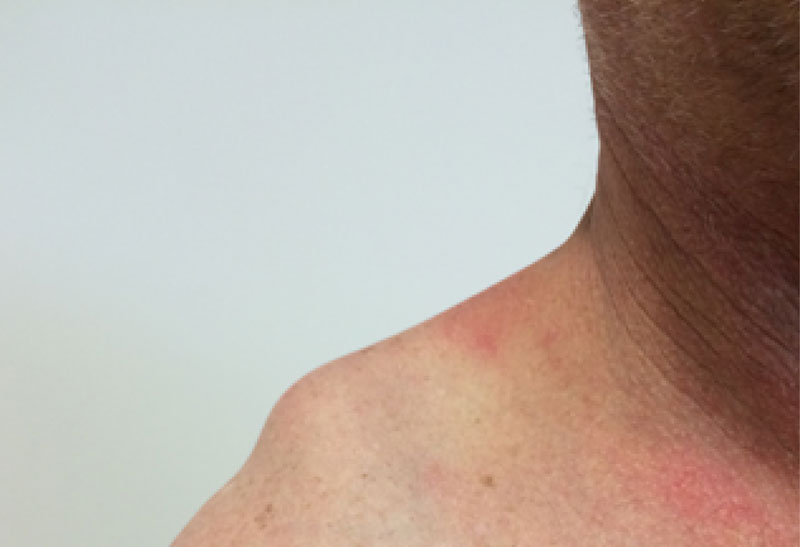
AC Joint dislocation treatment
Initial conservative treatment consists of:
- Resting in a sling
- Ice
- Oral anti-inflammatory medication and
- Activity modification
Depending on the severity of the injury, it may heal within two to three weeks. The good news is that the majority of Grade I, II and III injuries do not require surgery. Most of the Grade III injuries usually allow return to full activity with some restrictions.
However, in some cases, surgery may be indicated. Usually surgery is reserved for those cases with unacceptable deformity and collapse of the shoulder joint. In these situations the A-C joint is stabilised and reduced surgically.
Successfully treated AC joint dislocations
Tony is a 61 year old farmer, who lives in Rural NSW. His injury occurred when he fell off a horse and landed on his left shoulder. Tony presented to his local Emergency Department where he was complaining of left shoulder pain and an obvious lump. He was diagnosed of having an AC joint dislocation and had an X-ray was placed in a sling. He was given conflicting information as to what to do.
A week later, Tony attended my rooms and I noted that he had an obvious visible deformity to his left AC Joint. On examination, he had evidence of a Grade 3/5 Left AC Joint Dislocation, which was confirmed clinically and by Xray. He had collapse of his shoulder with loading his shoulder against resistance. This is typical of a significant disruption of your AC ligaments.
For this reason I gave Tony the option of an AC joint reconstruction using special tape and little metal dog bones that are placed on top of the clavicle. The advantage of surgery was that it could reduce the dislocation and decrease his pain.
I operated on Tony later the same day and, after an overnight stay in a Sydney hospital, he was able to travel 4 hours home. Tony reported feeling significantly better after the surgical stabilisation of the joint. Below is the x-ray just one week after surgery.
At 6 weeks he had normal alignment to his shoulder and near full range of motion. He was very happy he had surgical stabilisation of this joint.
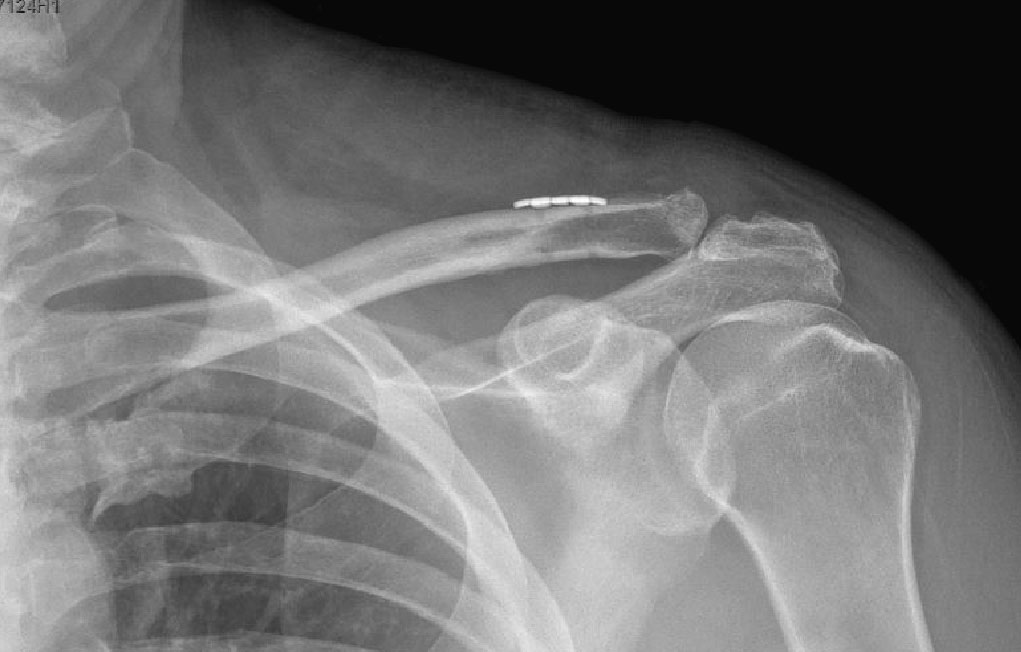
Move the slider to compare before surgery and 6 weeks after surgery
For specific advice regarding AC joint dislocations, please book an appointment with Dr David Duckworth on (02) 9806 3333
For appointments and enquiries, please phone (02) 9806 3333
8am to 5pm, Monday to Friday
© 2008-2024 Dr David Duckworth
